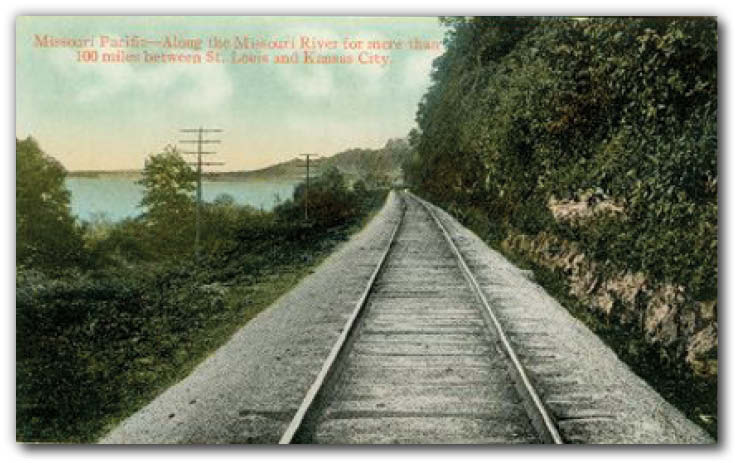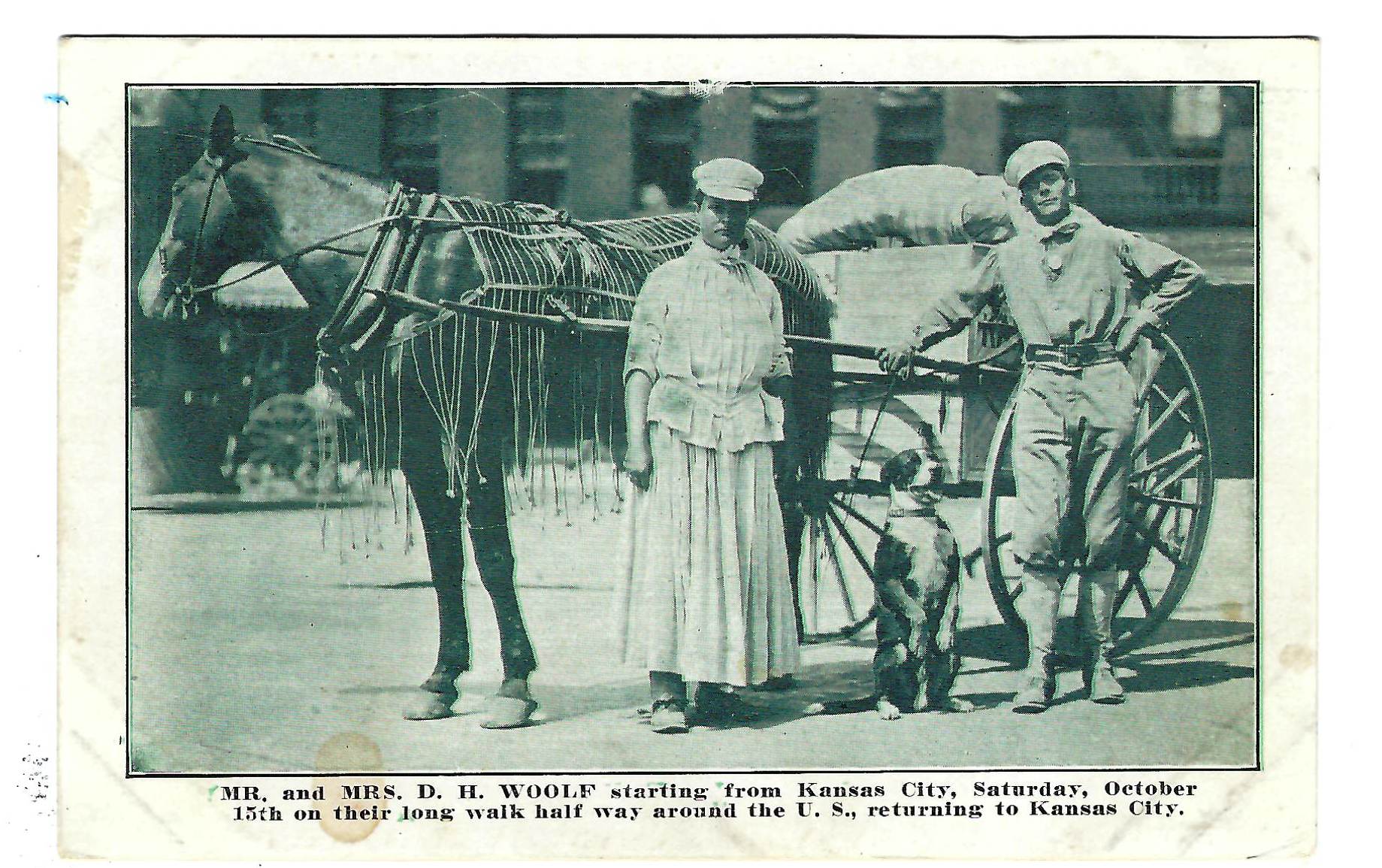By Michael Bushnell
Northeast News
January 20, 2016
Published for the Missouri Pacific–Iron Mountain Railway, this promotional postcard shows a picturesque view as described by the caption, “Along the Missouri River for more than 100 miles between St. Louis and Kansas City.”
The Missouri Pacific was as a Class I railroad, one that had grown to prominence through mergers and acquisitions of smaller regional lines. Following a groundbreaking in St. Louis in 1852, the railroad grew exponentially and capitalized on the westward expansion taking the country by storm.
By 1855, track had been laid as far west as Jefferson City linking the MoPac with smaller carriers in central Missouri.
By 1858, the end of the line was 35 miles west of Jefferson City in Tipton, then the eastern terminus for a new overland mail route to San Francisco called The Overland Mail. During the Civil War, growth of the Missouri Pacific came to a standstill as Confederate raiders, led by Gen. Sterling Price, exacted a heavy toll on the railroad’s track, equipment and depots along the entire east-west route.
The small portion of the route that had begun in Kansas City stretching east to Independence was sacked in a September 1864 raid that preceded the Battle of Westport.
On Sept. 19, 1865, the last spike was driven connecting the two parts of the railroad. The following day, a train departed from Kansas City for St. Louis leaving at 3 a.m. and arriving in St. Louis at 5 p.m.
Over the next 122 years, the Missouri Pacific shuttled both freight and passengers along its numerous routes and subsidiaries across the western United States. It even survived bad press following a crash in August 1922 when the MoPac No. 4 from Texas slammed into the rear of the No. 32 that had stopped in Sulphur Springs to take on water. The horrific wreck killed 34 passengers and injured 150 in one of the worst train wrecks in Missouri history.
According to news accounts, the engineer of the No. 4 failed to see block signals set against his train. By the time he saw the No. 32 stopped on the main track it was too late. The ensuing collision was so horendous it could be heard three miles away.
The rear of the No. 32 was sitting on a bridge over Glaize Creek when the accident occurred. Train cars were hurled into the creek bed, where many of the dead were later found.
During the 1960s and ‘70s, passenger ridership dwindled, and the MoPac placed a heavier reliance on freight in order to survive.
In 1980, the Missouri Pacific, the Western Pacific and the Union Pacific filed formal merger documents with the Interstate Commerce Commission. In 1997, the Missouri Pacific and Union Pacific filed formal merger documents making the “UP” the surviving entity in 140 years of rail history.
The Missouri Pacific route through Missouri remains alive today largely because of Amtrak. The track shown in the card is probably somewhere between Washington, Mo., and Jefferson City and travels through Kirkwood, Washington, Hermann, Gasconade, Jefferson City, Tipton, Sedalia, Warrensburg, Pleasant Hill, Lee’s Summit and, ultimately, through Union Station here in Kansas City.



















